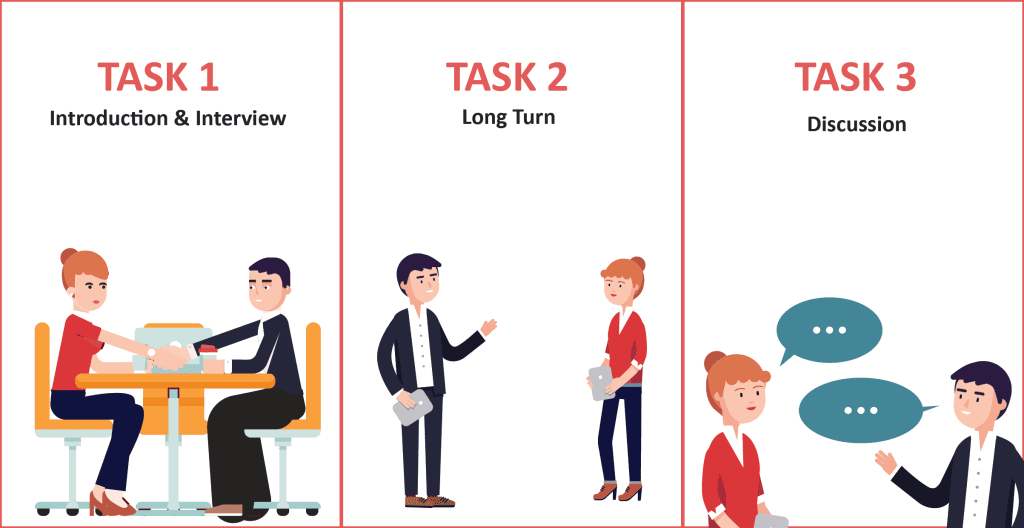Hello, today we want to talk about IELTS Speaking Sections skills. This test measures your comprehension and speaking ability proficiency and is held about a few days after or before the final test. The speaking test is the same for both General and Academic modules and consists of 3 parts, which we will explain below.
1. The first Section of speaking: introduction and interview.

As you know, this is an oral test, and you have to have a face-to-face conversation with an examiner. In the first part of the test, which is also the easiest part, the examiner will ask you about 10 to 11 questions that you must answer. These questions introduce the volunteer and are about the volunteer, residence, interests, behaviors, and everyday events. This part takes about 5 minutes, and your answers should be descriptive but short.
Many volunteers pass the first part of the speaking test easily; because it is convenient, but you should know that speaking well in this part is not enough. If you can not show your speaking skills to the examiner in the following sections, you will not get a perfect grade.
2. The second part of the IELTS Speaking Section: long term
This part is entirely different from the previous part. You should have more skills in understanding the content and the ability to describe events. The examiner gives you a card with a topic written on it in this part. You have about 2 minutes to think about the topic on the card, brainstorm, and take notes. The examiner then asks several questions about the topic, and you have to answer the questions in a fluent and completely predominant tone.

This section is one of the most important of the Speaking Test. In this section, the examiner will get an overview of your level and know where you stand. In other words, this section has the most significant impact on your score and attracts the examiner. It is also easy to practice. Just study the previous tests’ different topics and develop ideas for about 2 minutes to gain enough skills in this part. Also, in this part, you should have an excellent vocabulary to convey your meaning to the examiner easily because of the explanation of a different topic.
3. The third part of the IELTS Speaking Section: discussion
This section is as specialized as the second, and your language skills will be more helpful in this section. The third section is related to the second section. You should take about 3-4 minutes to answer the questions that the examiner asks you about the subject of the previous section and explain them. In this section, it is better to use long answers, various terms, and words in your descriptions to show your conversational skills in lengthy discussions and conversations.
The third section, which has about 3 to 6 questions, is the best opportunity to get the examiner’s opinion using fluent sentences.
Conclusion

For each section of the speaking test, a separate score is considered from 1 to 9. The examiner gives the most appropriate score according to the volunteer’s speaking skills. Finally, the average scores of these three sections are calculated and considered the overall speaking score of your IELTS test. So you have to practice enough in all three sections. Don’t forget to follow all the rules for the exam in your exercises; such as the correct pronunciation of words, fluency of sentences, use of different words, and correct grammar structure.

